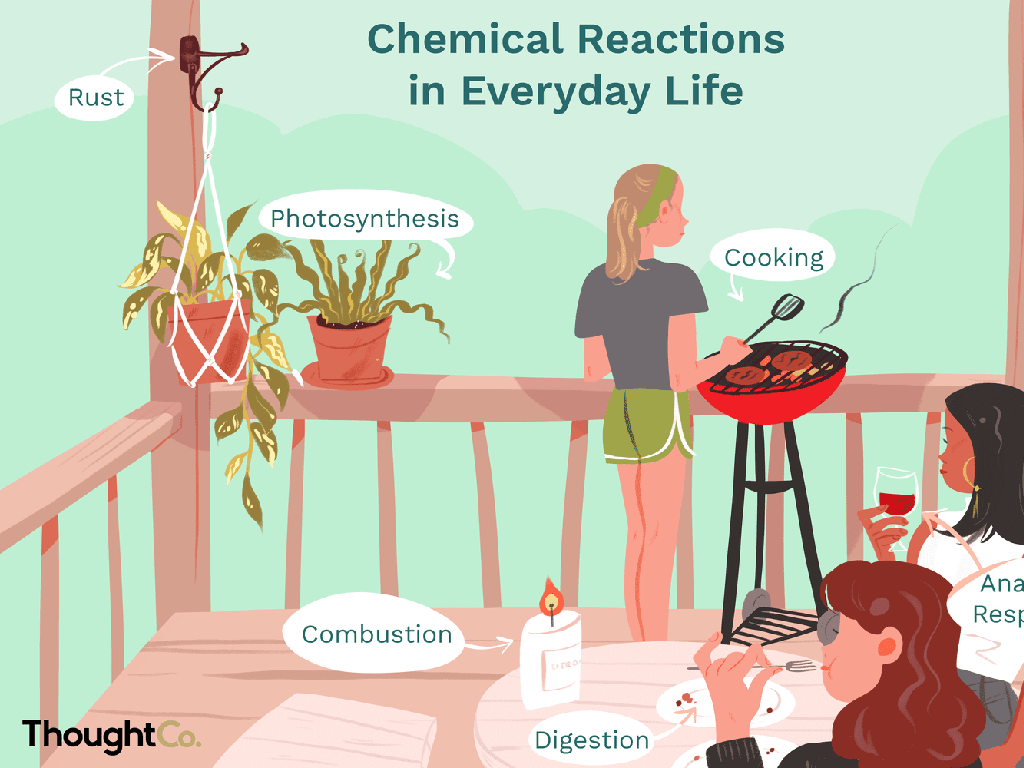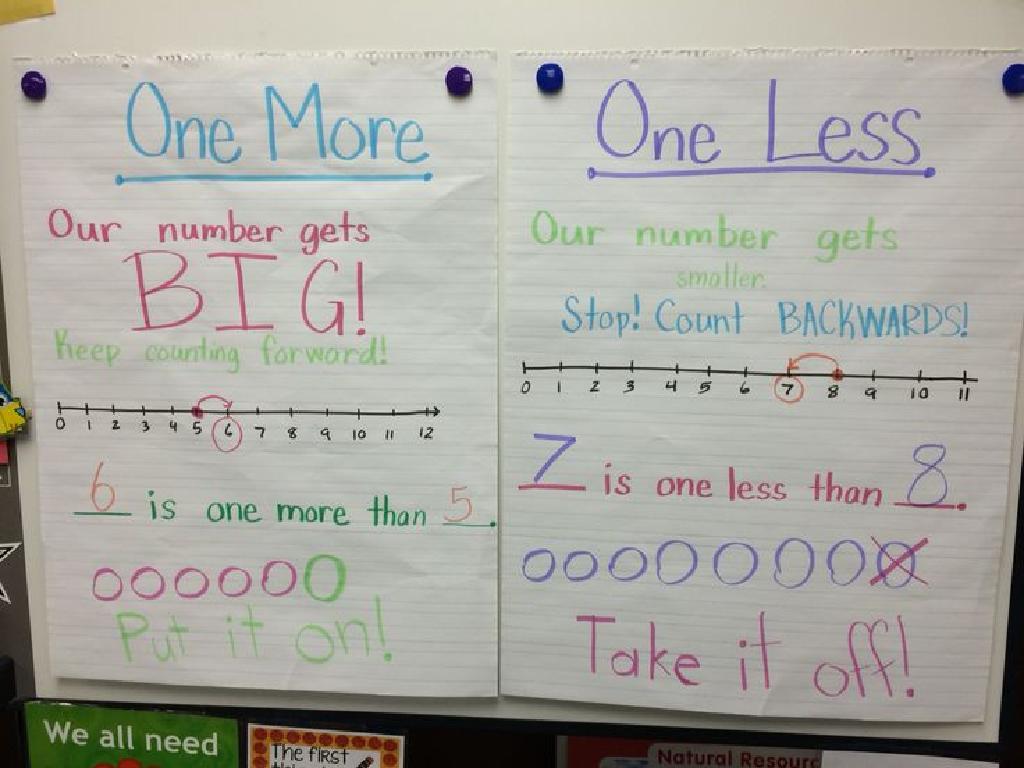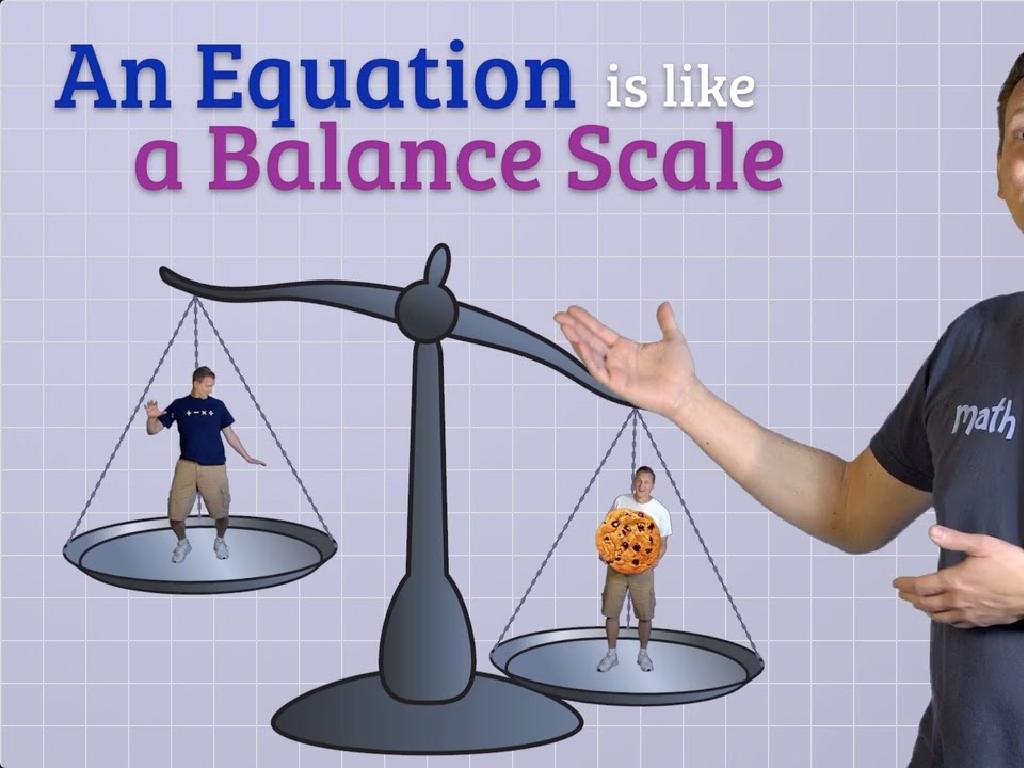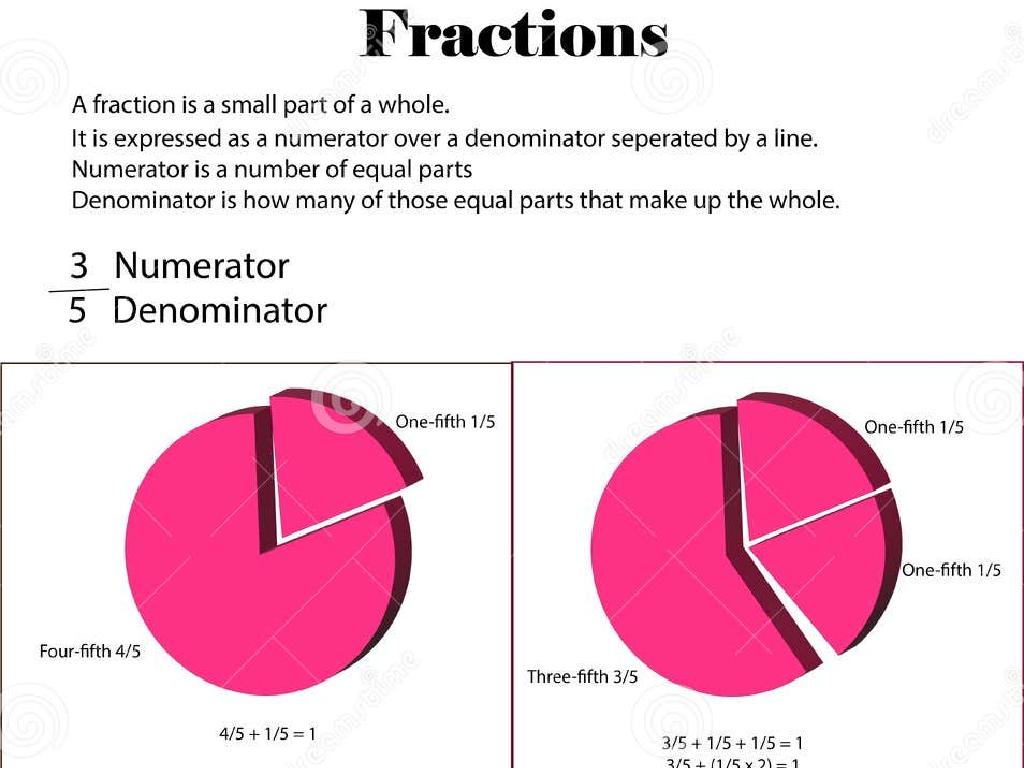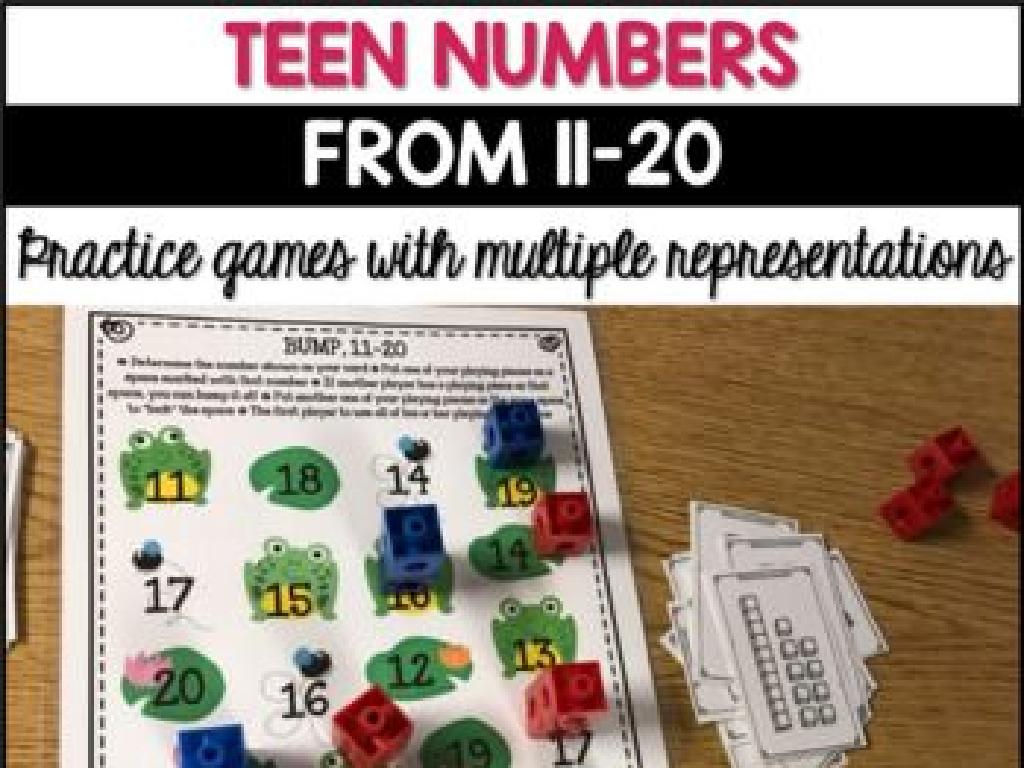Identify Questions That Can Be Investigated With A Set Of Materials
Subject: Science
Grade: Seventh grade
Topic: Designing Experiments
Please LOG IN to download the presentation. Access is available to registered users only.
View More Content
Welcome to Scientific Inquiry!
– Grasp the Scientific Method
– A process for experiments: Ask, Research, Hypothesize, Test, Analyze, Conclude
– Learn to ask investigative questions
– Questions lead to discovery: What, How, Why? Use materials to explore
– Design experiments with materials
– Use given materials to test hypotheses and answer your questions
– Today’s lesson overview
|
Today’s class is an exciting introduction to the world of scientific inquiry, where students will learn about the Scientific Method as a foundational process for conducting experiments. Emphasize the importance of asking the right questions, which are the driving force behind any scientific investigation. Students will understand how to use a set of materials to design experiments that can answer their questions. This lesson will guide them through the process of turning their natural curiosity into structured inquiry, setting the stage for hands-on learning and discovery.
Understanding Experiments in Science
– Define a scientific experiment
– A structured procedure to discover information or test a hypothesis.
– Key components of experiments
– Includes hypothesis, variables, materials, procedure, and data analysis.
– Experiments’ role in science
– Experiments validate or refute scientific theories through empirical evidence.
– Formulating investigable questions
– Questions should be specific, measurable, and related to the materials at hand.
|
This slide introduces the concept of a scientific experiment to seventh graders. Begin with a definition, emphasizing that an experiment is a methodical approach to answer scientific questions. Discuss the essential components, such as the hypothesis which is an educated guess, variables which are conditions that can change, and the importance of a step-by-step procedure. Highlight the role of experiments in advancing scientific knowledge by providing concrete evidence that supports or challenges existing theories. Encourage students to think about how they can use available materials to ask questions that can be tested through experiments. This will set the foundation for them to design their own experiments in future lessons.
Asking Investigative Questions
– Traits of good investigative questions
– Clear, focused, and researchable with materials at hand
– Investigative vs. non-investigative
– Investigative questions lead to experiments; non-investigative are factual
– Examples of investigative questions
– ‘What happens to plant growth when exposed to different light colors?’
– Crafting your own questions
|
This slide aims to guide students on how to formulate investigative questions that can lead to scientific experiments. A good investigative question should be clear, focused, and answerable through direct investigation using available materials. It’s crucial to distinguish between questions that can be investigated through experiments and those that are purely factual or informational. Provide examples of investigative questions to illustrate how they prompt experimentation and discovery. Encourage students to think critically about the materials and resources they have and to come up with their own investigative questions. This will prepare them for designing and conducting their own experiments.
Materials in Scientific Experiments
– Common experimental materials
– Beakers, test tubes, and Bunsen burners are often used.
– Choosing the right materials
– Consider the experiment’s goal to select materials.
– Matching materials to questions
– Ensure materials align with the investigative question.
– Importance of appropriate materials
|
This slide aims to educate students on the significance of selecting appropriate materials for scientific experiments. Start by discussing common materials found in a lab, such as beakers and test tubes, and their general purposes. Then, guide students on how to choose materials that are suitable for their specific experiments, emphasizing the importance of aligning their choices with the objectives of their investigation. Explain how the investigative question drives the selection of materials, as the right materials are crucial for obtaining valid and reliable results. Encourage students to think critically about the function of each material in their experiment design. Provide examples of material selection for different types of experiments to illustrate the process.
Designing Your Experiment
– Outline steps for experiment design
– Start with a clear question, then plan the procedure step by step.
– Formulate a testable hypothesis
– A hypothesis is an educated guess to answer your question.
– Determine variables and controls
– Variables are elements you change, controls remain constant.
– Understand the role of each element
– Knowing what to test and what to keep the same ensures a fair test.
|
This slide aims to guide students through the initial stages of designing a scientific experiment. Begin by discussing the importance of a structured approach to experimental design. Emphasize the need for a clear, focused question that guides the hypothesis. The hypothesis should be a statement that can be tested through the experiment. Next, explain the difference between independent and dependent variables, as well as the significance of control variables in maintaining the integrity of the experiment. Encourage students to think critically about how each part of the experiment contributes to a reliable outcome. Provide examples of simple experiments to illustrate these concepts. For instance, if testing plant growth, the independent variable could be the amount of sunlight, the dependent variable the plant height, and the control could be the type of plant used.
Group Activity: Design Your Own Experiment
– Form small experiment groups
– Receive a mystery material set
– Develop a research question
– What can you discover using these materials?
– Plan the investigation steps
– Outline procedure, predict outcomes
|
This slide introduces a hands-on group activity aimed at teaching students how to design an experiment. Divide the class into small groups to foster collaboration. Each group will be given a set of materials without prior knowledge of what they will receive, to simulate real-world scientific inquiry. The task for each group is to identify a question that can be investigated using only the materials provided. They will then need to plan the steps of their investigation, including making predictions about possible outcomes. As a teacher, prepare diverse sets of materials that can lead to various types of experiments. Provide guidance on how to formulate a good research question and the importance of a methodical approach to experimentation. Possible activities could include testing the strength of different materials, observing chemical reactions, or exploring the properties of light with lenses and mirrors.
Present Your Experiment Design
– Present your research question
– State your experimental aim
– What do you hope to learn from the experiment?
– Describe the material usage
– How will each material help answer your question?
– Outline the investigation process
– Steps you’ll take to conduct the experiment
|
This slide is for students to use as a guide when presenting their experiment designs to the class. Each group should clearly articulate the question they are investigating and what they aim to discover through their experiment. They must explain how they intend to use the provided materials to explore their question and detail the steps of their investigation process. For the teacher: prepare to facilitate discussions, ask probing questions to help students clarify their thoughts, and ensure each group has a chance to present. Offer feedback on the clarity and feasibility of the designs. Possible activities could include testing plant growth with different fertilizers, examining the effects of temperature on solubility, or exploring the principles of physics with simple machines.
Class Discussion: Experiment Design
– Discuss experiment designs
– Give group feedback
– Offer positive comments and suggestions for improvement
– Relate questions to discoveries
– How can a question spark a new experiment or discovery?
– Reflect on the scientific method
– Understanding the steps from question to conclusion
|
This slide is meant to facilitate a class discussion on the various designs of experiments that students have come up with. Encourage each group to present their experiment design and provide constructive feedback to one another. Emphasize the importance of positive reinforcement while also suggesting areas for improvement. Discuss how the questions they are investigating could potentially lead to significant scientific discoveries. Highlight the importance of curiosity and inquiry in the scientific process. Use this opportunity to reinforce the steps of the scientific method and how it guides from forming a question to reaching a conclusion. Prepare to guide the discussion with examples of historical scientific discoveries that began with simple questions.
Conclusion: The Art of Inquiry in Science
– Recap today’s key lessons
– Significance of precise questions
– Right questions lead to meaningful experiments
– Homework: Craft 3 questions
– Think of materials and phenomena you encounter daily
– Relate questions to daily life
– How can these materials’ properties or behaviors be tested?
|
As we conclude today’s lesson on designing experiments, it’s crucial to emphasize the value of formulating the right scientific questions. These questions are the foundation of any investigation and guide the direction of research. For homework, students are tasked with writing down three investigative questions that relate to their everyday experiences. This exercise aims to develop their curiosity and ability to observe the world scientifically. Encourage them to consider the properties of materials or natural phenomena they come across daily and think about how they might investigate those through experiments. In the next class, we’ll discuss their questions and explore how they could set up experiments to find the answers.

